[The following was from IntegralChristian.org, which is no longer an active link]:
Quadrants
Quadrants are based on four broad categories into which we can place all phenomena. These four categories help us better understand how the world and everything in it fits together. To get the four quadrants, we begin by making two fundamental distinctions about reality:
1. The distinction between interiors and exteriors.
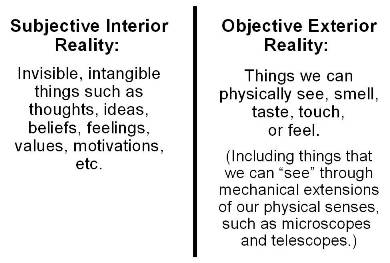
In academics, we can see that some disciplines primarily study the left-hand side of reality, and others primarily study the right-hand side.
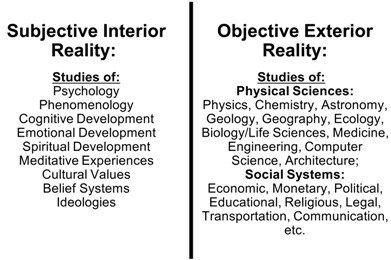
Some disciplines, such as psychoneuroimmunology, study the relationship between the two.
There is a correlation between the level of interior consciousness of an organism on the left-hand side, and the physical structure that houses it on the right-hand side. For example, in the progressive evolution from reptiles to mammals, each new level of organism that emerges has both a higher interior level of consciousness on the left-hand side, and a more complex brain structure on the right-hand side.
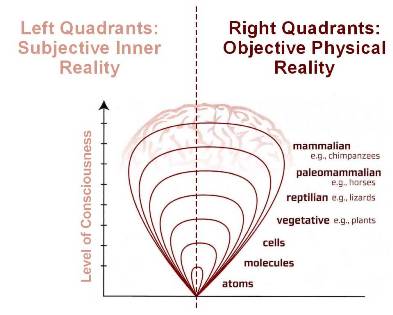
To purchase the book this diagram is from (The Integral Vision), click here.
2. The second fundamental distinction about reality is the distinction between the individual and the collective.
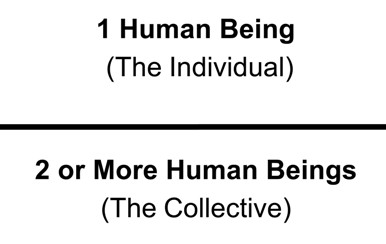
When we combine these two fundamental distinctions (interior/exterior and individual/collective) we get the four quadrants:
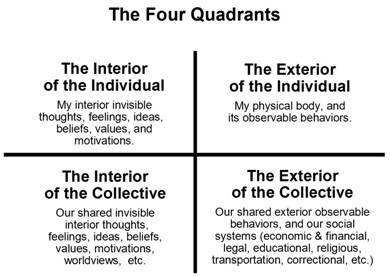
The four quadrants are four dimensions of reality that are present in every moment and every event or occasion. These four aspects of reality are inter-dependent. Each exists in connection with the others. When something happens, it occurs in all four quadrants. For example, let’s consider the experience of having a toothache.
* When I have a toothache, in the upper right quadrant is the tooth itself, and my nerves and brain that are sending and receiving sensations of pain.
* In the upper left quadrant are my feelings about the physical sensations I am experiencing. Am I angry that my tooth hurts? Annoyed? Worried about going to the dentist?
* In the lower right quadrant is the dentist I might go to see, and how I will pay the dentist (including my insurance or lack thereof, and my income level).
* And in the lower left quadrant are my friends’ sympathy for my pain, and society’s beliefs about what my teeth ought to look like, or who ought to be responsible for paying for my trip to the dentist.
Consciously considering all four quadrants in any decision or situation can give us a more complete understanding of the situation. And consciously paying attention to all four quadrants can help us live a more balanced, healthy life. For example, do I focus so much of my time and attention on work and earning money (the lower right quadrant), that my health (the upper right quadrant) and relationships (the lower left quadrant) suffer?
Quadrant Absolutism
Sometimes people take the position that only phenomena in one or two of the quadrants are ultimately “real,” and that all phenomenon in the other two or three quadrants are derived from the one or two quadrants they consider “real.” For example:
* When scientists assert that all reality is reducible to nothing but objective matter (for example, the assertion that consciousness is entirely reducible to brain cells and chemistry), they are reducing all quadrants to the upper and/or lower right quadrants.
* When some new age authors claim that my individual interior thoughts create the entire physical world, they are reducing all quadrants to the upper left.
* When extreme post-modernists assert that “all knowledge is nothing but a cultural construction,” or that “all values and worldviews are equal, and we cannot judge any of them against another,” they are reducing all quadrants to the lower left.
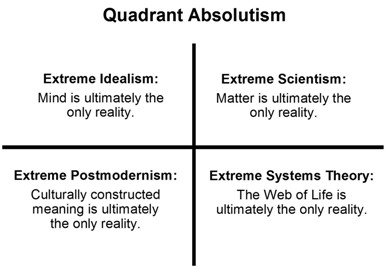
Integral theory asserts that all of these views are mistaken, and that each of the four quadrants represents a fundamental aspect of reality, which co-exists with and is not reducible to any of the other three.
Perspectives
The four quadrants can also be viewed as four perspectives. The upper left quadrant represents the 1st person perspective (“I,” or the person speaking). The lower right quadrant represents the 2nd person perspective (“You,” or the person being spoken to), and the 1st person plural perspective (“We,” or the mutual understanding between “You” and “I”). And the two right-hand quadrants represent the 3rd person perspective (“It” and “Its” in its strongest form, or the person or thing being spoken about).
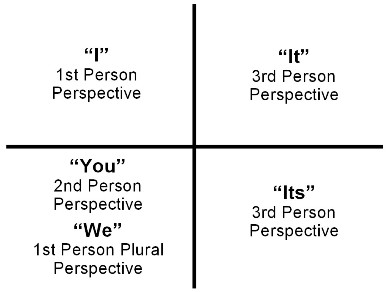
These three perspectives turn out to be similar to other broad categorizes of human knowledge and experience. For example, Plato’s the good, the true, and the beautiful. Or art, morals, and science.
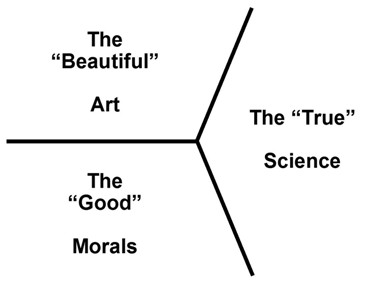
God or Spirit in 1st, 2nd, and 3rd Person
These three perspectives can also be seen in the worlds’ great religious traditions, as perspectives we can take on God or Spirit. Judaism, Christianity, and Islam understand and experience God primarily in 2nd person, as a great “Thou” or other. Buddhism understands and experiences the Divine as the great “I,” or my True Self. And Pantheistic traditions experience God or Spirit as Nature or the great “Web of Life.” In the integral model this doesn’t mean that there are three different “Gods.” It means there are three different understandings and experiences we can have of the One God or Spirit.
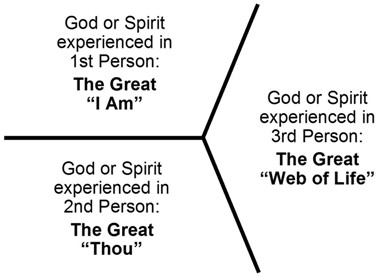
In the integral model, no one of these views of God or Spirit is seen as the only “right” one. Each perspective has something important to teach us. Without all three, our understanding and experience of the Divine is incomplete.
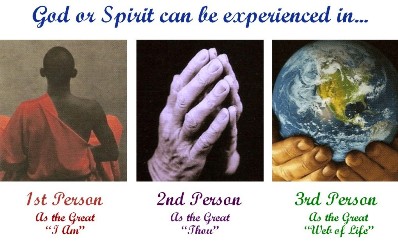
To purchase the book this picture is from (The Integral Vision), click here.
Click HERE for more about the concept of the witnessing state within the Four Quadrant model.

